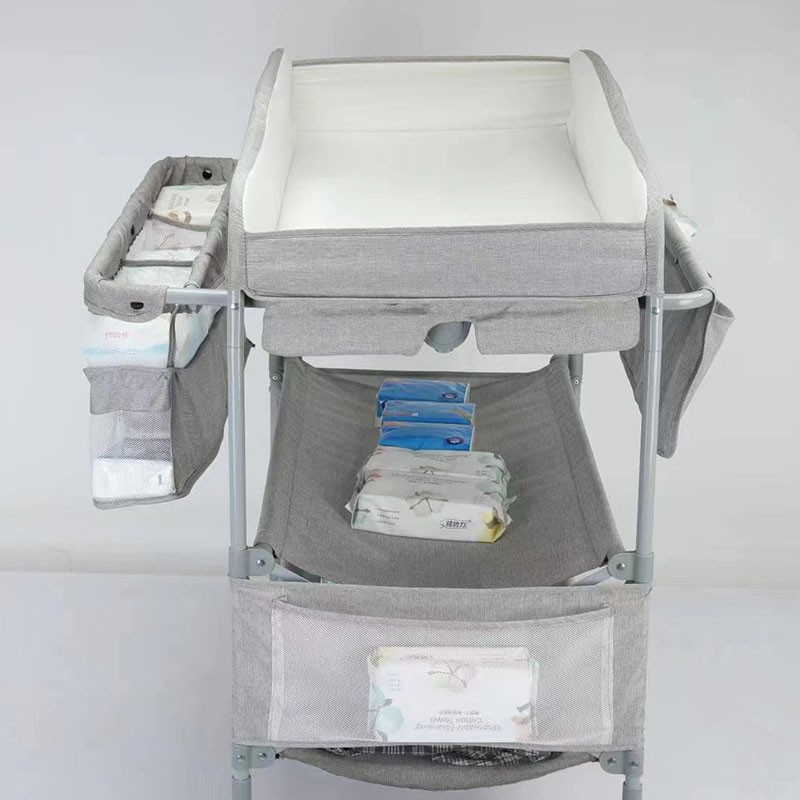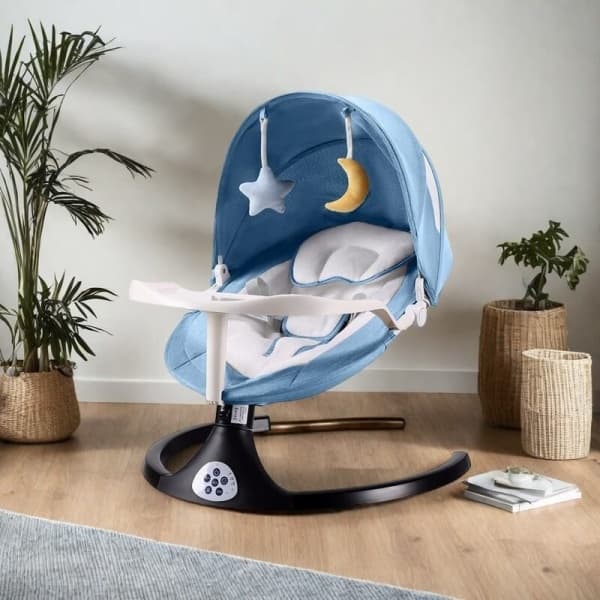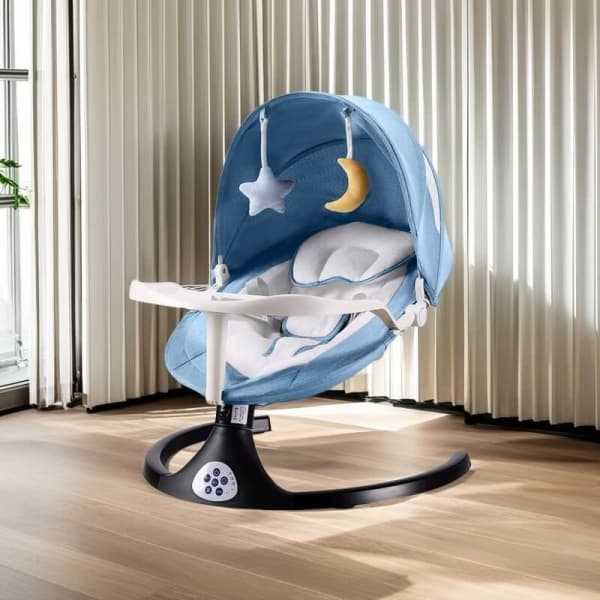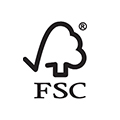Between gathering the necessary supplies, positioning the baby comfortably, and navigating the change, diaper changes can get messy and challenging.
Baby changing tables are a saving grace in all this. They provide a safe designated space to perform diaper changes in a more organized way. However, like most baby care items, they are ideal for specific stages of parenting.
So, in today’s guide, we share key insights about using baby changing tables, when parents should stop using them, and alternatives to baby changing tables worth considering.
Why Should Parents Use Baby Changing Tables?
At face value, it may be easy to dismiss baby changing tables as another trend of modern parenting. However, the truth is that they are a necessity with Weighty benefits such as:
Safety
For starters, most of them are padded or come with removable cushions. These ensure that babies stay warm and cushioned from any hard surfaces that may injure them during diaper changes.
Safe diaper changing stations additionally have raised edges or some kind of barrier to prevent babies from rolling over and falling. This is safer than performing diaper changes on arbitrary surfaces like a bed, countertop, or a couch where a baby can roll the moment you turn away for a fresh diaper or baby wipes.
Hygiene
Baby changing stations facilitate this because they provide a designated area to handle diaper changes. Parents and caregivers can clean up the station after the change and go about their day. It is a much better standard of hygiene than changing diapers anywhere in the house and risking rampant contamination.
Storage
Most parents and caregivers with the mad rush of needing extra wipes or a fresh diaper and finding it out of reach. It is not only frustrating but can lead to very messy diaper-changing sessions.
Modern baby changing table designs come with storage and can prevent such debacles. They make it easy to arrange all the essentials you need in one place and subsequently, have everything you need within reach.
Convenience
Baby changing table manufacturers now offer models with highly convenient features. They make diaper changes and parenting, in general, much easier. Such features include:
- Mini bathtubs for quick clean-ups
- Foldable structures for easy storage and portability
- Height adjustability to facilitate comfortable positioning for parents and caregivers
- Easy-to-clean structures to facilitate proper hygiene
How Long Are Changing Tables Typically Used?
Most parents tend to use changing tables from the infancy stage (after birth) until the age of 2 years or so; when babies begin potty or toilet training.
This transition is ideal because it allows parents to use diaper changing stations until their children outgrow diapers. However, some parents or caregivers may stop using changing tables before the typical age of 2 years if their babies outgrow the changing table or adapt to potty training earlier.
When to Stop Using the Changing Table: Key Signs

Every baby is special. Some babies, for example, grow taller or gain weight earlier than others. Consequently, it is best to choose when to stop using a changing table based on the individual needs of a baby.
Some of the key signs that may indicate that it is time to stop using a changing table include:
An Improper Fit: A baby should comfortably fit onto a diaper changing station such that no limbs or any other part of their body is hanging out of it. So, if you notice that your baby’s height or girth has outgrown the size of the changing table, it is best to stop using it.
Stability Issues: Some changing tables can only support babies up to a specific weight limit. When the baby gets to the indicated weight limit it is crucial to stop using the changing table immediately. Exerting any excess weight on it places the baby at a high risk of the changing table tipping over due to instability or falling apart.
Hyperactivity: Adventurous babies may be inclined to roll over or try to get off a changing table during diaper changes. This can be risky as they may fall during such attempts or make bigger messes. When this becomes a common occurrence, it may be best to consider other alternatives to mitigate this risk.
Alternatives to Using a Changing Table
While changing tables are a great help, they are not ideal for every home or parenting situation. For example, when your baby starts to move a lot or outgrows a changing table, you may inevitably have to find suitable alternatives for how to handle diaper changes. Consider:
Changing Mats
Changing mats are made of a spongy pad draped in a soft but resilient fabric. They are foldable and provide a safe comfortable space where parents can lay a baby down for diaper changes. It is, nevertheless, vital to use changing mats on a flat stable surface and keep an eye on the baby at all times.
Pros
- No weight limits.
- They are ideal for both home and on-the-go diaper changes.
- Changing mats with waterproof covers are easy to clean.
Cons
- They have limited safety features and babies can still roll or crawl off them.
- Unsuitable for toddlers due to size.
Changing Pads
Changing pads are thicker than changing mats because they have much more padding. They vary in size and design but they are all designed to accommodate a baby and keep them comfortable during diaper changes.
Pros
- A portable design.
- Some have a curved design that prevents babies from rolling over.
- Most have removable waterproof covers for easy cleaning.
Cons
- No storage provisions.
- Not foldable for easy travel.
Changing Baskets
Changing baskets have padding or a cushion insert where parents can place a baby and go about a diaper change. They provide an isolated safe space for diaper changes just like a changing table does. The major difference is that they are portable and have no storage.
Pros
- Portability.
- The basket design can keep any messes contained in the surrounding environment.
- The basket design can limit risks like rolling.
Cons
- Wicker, rattan, or other basket materials can be hard to clean.
- Not suitable for toddlers.
What Are the Dimensions of a Changing Table?

The dimensions of changing tables vary between manufacturers. However, most baby changing table manufacturers adhere to the dimensions stipulated in EN 12221-1:2008+A1:2013 and the ASTM F2388-21 regulations which are used in the EU and the U.S. respectively.
Subsequently, the dimensions of most changing tables fall in the following ranges:
- Height: 700mm to 950mm
- Width: 550mm to 750mm
- Length: 650mm to 750mm
Most manufacturers now also recognize the importance of designing ergonomic baby furniture and baby care products. Quality baby changing tables, therefore, now tend to be height adjustable so that caregivers can set them up at a level that is comfortable for them.
How to Organize a Baby Changing Table?

Organizing a baby changing table in the right way is vital so that parents can enjoy its full benefits and ensure utmost safety. Let’s look into some tips on how to do this, shall we?
Proper Positioning
It is advisable to place a baby changing table on an even floor surface for stability. Clear any clutter from the surrounding area as well to ensure there is adequate room to move comfortably during diaper changes.
Aim for at least one side of the baby changing table to be buttressed against a wall for extra support.
Keep Supplies Within Reach
Assess the design of your changing table to check for allocated storage areas for supplies. Some changing tables may have space along the side of the changing surface or under it. The trick is to find a suitable spot for each product and ensure the most vital ones, like diapers, are always within reach.
Keep in mind that babies can get quite fast and curious as they grow. You may, therefore, need to store some products (like ointments or liquids) away from their grasp to make diaper changes less hectic.
Declutter the Changing Area
Always keep the changing area free of clutter or any other items. It ensures that the baby is safe from items that may poke them, obstruct their breathing, or choking hazards when you lay them on the surface.
Have Clearance Bins
Place a disposal bin next to or under the changing table and empty it after diaper changes. It will go a long way in helping you keep the area clean because you can toss out everything you use on the spot.
It may equally be helpful to have a laundry bin nearby to toss dirty baby clothes into.
FAQs
What Safety Precautions Should I Take When Using a Changing Table?
Always keep the changing surface empty except for a changing pad or mat where necessary. Check that the baby is properly positioned on the changing table and strap the baby in using safety straps if the changing table has them.
What Factors Should I Consider When Choosing a Changing Table?
Try to choose a diaper changing table with safety features, sufficient space, strong load-bearing capacity, and adjustable height.
What Are the Different Types of Changing Tables?
There are 4 main types of changing tables: portable changing tables, freestanding changing tables, dresser changing tables, and wall-mounted changing tables.
Can a Baby Sleep on a Changing Table?
No. Changing tables are not safe sleeping areas for babies no matter the design. Always remove the baby from the changing table once the diaper change is complete and do not leave them unattended at any point.
Which Certifications Should I Look for When Choosing a Baby Changing Station?
Look out for baby changing table manufacturers whose products meet international safety standards such as EN 12221-1:2008+A1:2013 and ASTM F2388-21. Other certifications like JPMA from reputable regulators are equally a plus.
Conclusion
Choosing a quality changing table and adhering to the recommended safety precautions can make diaper changes much easier for parents and caregivers. The different designs in the market further provide enough options to suit different lifestyles.
At Clafbebe, we design baby changing tables with features that simplify childcare. Whether you are concerned about storage, portability, comfort, safety, or easy cleaning, our models address every need. Each design meets global certification standards and delivers an outstanding user experience.
Contact us today for a quote or inquiries.
Recommended Related Articles:














